ATV and UTV batteries are considered consumables that go bad over time due to sulfation, bad cells, poor maintenance, or simply old age. Before you go ahead and buy a new battery, it’s a good idea to test the condition of the one you have. That way, you know you are not wasting your money when other issues may be the real cause of your poorly performing battery.
No single test will troubleshoot all of the potential problems a battery can have. But by going through the steps in this little guide, you will cover most aspects that may be causing issues.
These are the tools you will need:
Caution: For all of the testing in this post, we recommend that you use safety glasses and gloves.
Page Contents
You may just have found that your ATV does not want to start, and you suspect that it’s caused by a dead battery. Keep in mind that there is a range of other reasons why your ATV seems completely dead or will not start.
Before spending too much time testing the battery, we recommend you make sure there are no simple solutions like forgetting to turn off the kill switch, not having the gear shifter in “park” or keeping the brake lever activated. Such mechanical safety features that may prevent your ATV from starting vary from model to model. Here is a complete guide for when an ATV won’t start.
Before you begin testing, it’s a good idea to inspect the battery visually. You may need to remove the battery from the ATV for a proper inspection.
If you notice any of the following defects, there is a good chance your battery is bad beyond repair. Replace it with a new one, no further testing is necessary.
A visible bulge may be a sign of overcharging. Smart chargers shut off automatically when a battery is fully charged.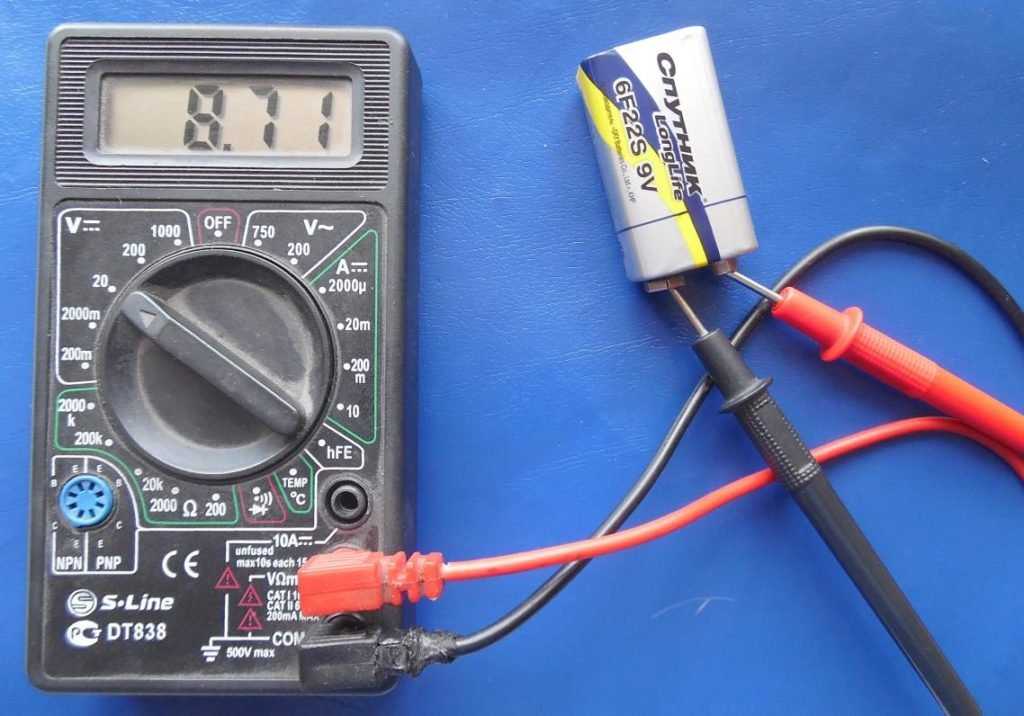
Manual chargers, on the other hand, need to be monitored and turned off manually as soon as the battery reaches a full charge, or you face a risk of overcharging the battery.
The terminals should feel solid and not move even slightly. A loose terminal may create a potentially dangerous short circuit.
When a loose terminal short circuits, the battery will discharge all of its power immediately. Such a rapid discharge creates a lot of heat that can melt the plastic or make it catch on fire. A direct short like this can sometimes even cause the battery to explode.
Battery casings are tough but may crack open from impacts, mishandling, or if the battery has frozen. A cracked battery may still work fine but should be replaced never the less due to safety reasons.
Battery fluid should not leak off the battery. If it does, the battery should be replaced.
If it does, the battery should be replaced.
If the color of the electrolyte fluid inside one or more of the cells has turned brown or dark, your battery is most likely bad. It does not matter if the other cells look healthy; if one cell is dark, the entire battery is rendered useless.
Inside a conventional lead battery, there is electrolyte fluid that should reach up to a level where it fully covers the top of the lead plates or within a specified max/min level found in each cell.
Carefully remove the filler caps and inspect using a flashlight. If electrolyte levels are low, top of with distilled water until you reach the correct level. Never try charging a dry battery as it may cause it to burn up.
If the battery has been sitting dry or with a low electrolyte level for too long, chances are it has sulfated beyond repair.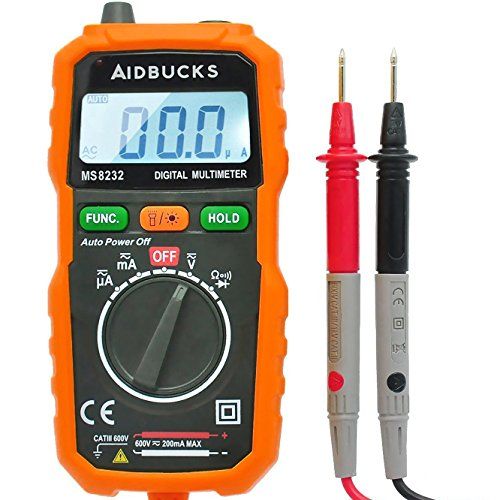
By fully charging a battery and then measuring its open-circuit voltage, you can tell quite a few things about its overall health.
If you are not sure how to properly charge your type of battery, I advise you to follow the steps in this guide.
After charging the battery to a full charge, and with the charger disconnected, allow the battery to “rest” for a minimum of 12 hours.
This is necessary for the battery voltage to stabilize after the charging process, or you may get a false reading. Often there is a surface charge still present some time after disconnecting the charger.
If you don’t have time to wait as long as 12 hours, you could also turn the lights (high beams) on for two minuts to remove the surface charge.
Use a multimeter or volt-meter to read the battery’s voltage under no load.
| Open-circuit voltage reading | What it tells you |
| 0V | THe battery is not able to hold a charge. The battery likely has an internal short circuit and needs replacing. |
| Less than 10,5V | One or more dead cells. |
| Less than 11,8V | The battery is heavily sulfated beyond repair, and is not able to hold a suficcient charge. |
| Between 11,8V and 12,4V (12,4V equals about 75% state of charge) | The battery is sulfated to a level where it may no longer be fully recoverable. |
| 12.4V or more | The battery his able to hold a suficcient charge. You can expect a high level of recovery by performing a desulfation charge. |
An open circuit voltage reading, as described above, is helpful but does not always paint the full picture. The battery may still be bad even if you get a reading of 12.4V or higher.
Sometimes, you will find that the voltage drops fast as soon as you draw power from the battery. If so, the battery is likely bad and needs to be replaced.
To test if the battery can drive a load, you can perform a so-called load test. The goal of this test is to make sure that the battery voltage does not drop too low when drawing a high load.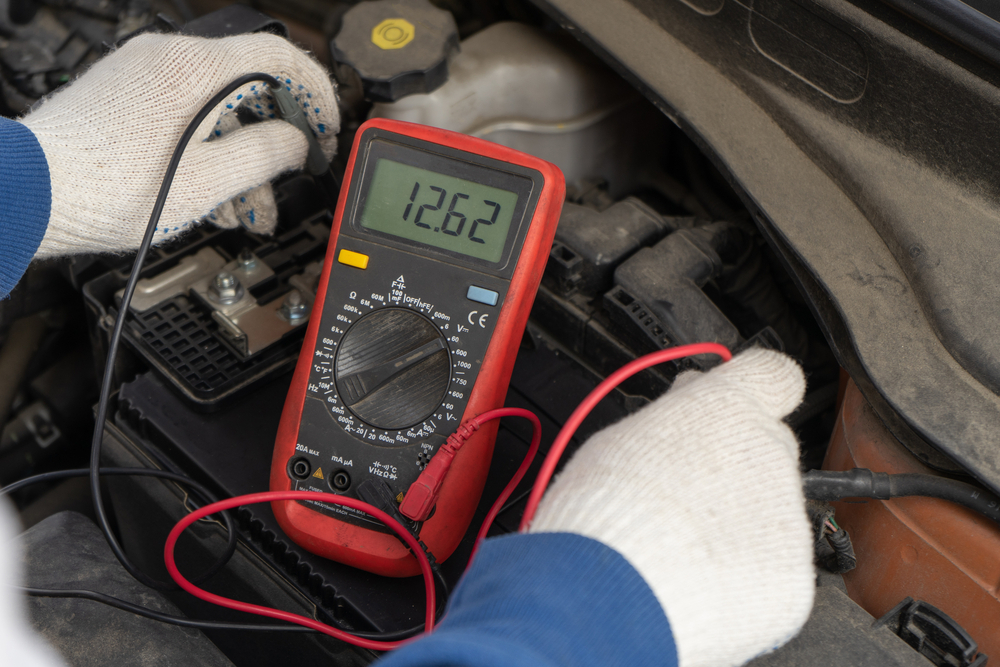
A healthy ATV or UTV battery rated at around 200-400CCA should be able to maintain a voltage of 9,6V or more even under load (at 70°F (21.1°C)). A 400CCA battery should not drop below 10V.
You will need a multimeter. Preferably one that has a max/min function. If you use a multimeter without a max min, you may get a false reading, as the display refresh rate cannot keep up to show the actual minimum voltage reading.
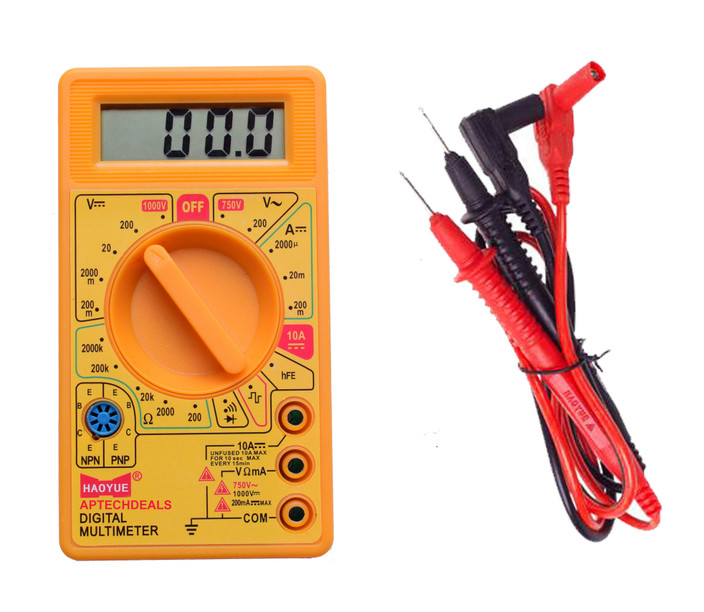 It’s OK if the ATV starts.
It’s OK if the ATV starts.A variety of consumer-grade batty testing tools are available in the $20 to 50 price range, where the two major types are digital and analog testing tools. Each tool has a specific user manual that needs to be followed, but I will outline how they work on a general level below.
An analog testing tool uses a built-in resistance element/heat coil to simulate a high load. The tool measures the voltage drop under load, indicating if the battery is good, weak, or bad, relative to its CCA-rating*.
The tool measures the voltage drop under load, indicating if the battery is good, weak, or bad, relative to its CCA-rating*.
* CCA is the amount of current the battery can put out at -18°C (0°F) for 30 seconds while maintaining a cut-off voltage of at least 7,2V. You should find the battery’s CCA rating on the battery label. Each battery comes with a specific CCA rating. The actual CCA capacity decreases as the battery gets older or damaged.
If the voltage recovers to its full potentil an only a couple of seconds after releasing the load switch, you know that the battery is bad. However, if the voltage recovers slow, yor battery is likely just run down and needs a proper charge.
The scale on a typical analof battery load tester.
Please refer yor the user manual of your testing tool for test directions specific to your tool.
Digital consumer-grade battery analyzers are inexpensive, compatible with most battery types, and can offer a range of test features such as:
To load test the battery you need to set the tool to its CCA-mode. You will need to insert the battery’s CCA rating before you begin the test. You should find the rating stamped on the battery casing, or by looking up the battery model number online.
Head over to this post to learn more about what ATV battery numbers mean.
The test will indicate how many CCA the battery is capable of.
This AGM ATV battery gets a CCA reading well over it’s rated capacity of 320CCA, and should be in good health.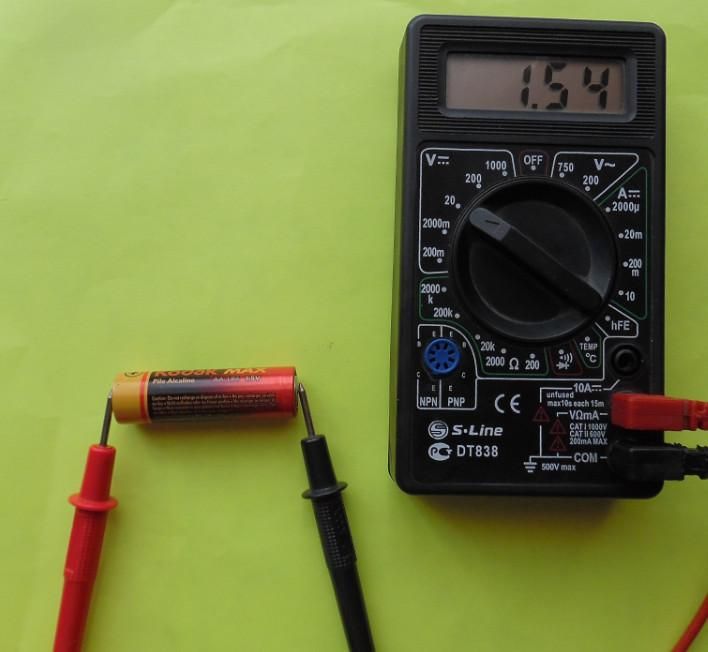
Based on the measured CCA, the test tool may also provide you with a useful capacity reading or state-of-health reading in %:
| State Of Health (SOH) in % | Battery status |
| 0% to 40% | The battery is damaged or too old for normal operation and should be replaced. |
| 40% to 60% | The battery is getting old or getting weak. Consider replacing it. |
| 60% to 80% | The battery is in normal working order. |
| 80% to 100% | The battery is in good to excellent working order. |
A digital test tool may also be able to test the battery’s internal resistance. Resistance is measured in milliohms (mΩ) and tells you how much restriction the electrons encounter as they travel through the internals of the battery. A lower value indicates less restriction.
This AGM ATV battery has an internal resistance of 6.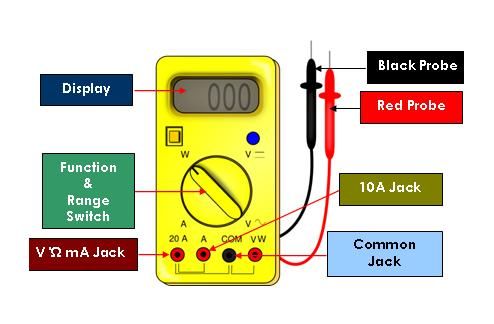 04 milliohms (mΩ).
04 milliohms (mΩ).The internal resistance of a modern ATV battery stays relatively flat throughout its service life and then increases as the battery starts to go bad. A high resistance reading indicates that the battery is getting close to the end of its life-span.
The internal resistance can vary as much as 5-10% from one batch of batteries to another. For the most accurate results, you need to measure the resistance of your specific battery when it is brand new as a reference for later testing.
A few years down the line, when you teat again and get a significantly higher reading, you know that the battery doesn’t have much time left.
Both Method 1 and 2 give you a relatively good indication of your battery’s health, but the accuracy of consumer-grade test tools are not always the best.
To get the most reliable results, you should have it tested with a professional load testing tool. A proper load test should draw a load that is half of the batteries rated cold-cranking amps for 10 seconds.
A proper load test should draw a load that is half of the batteries rated cold-cranking amps for 10 seconds.
Most Battery suppliers have one and usually don’t charge to do a test. Disconnect the battery and bring it fully charged to be tested.
Several of the tests in this post are designed to indicate your battery’s level of sulfation. But what is sulfation, and why does it matter when testing an ATV or UTV battery?
Over-sulfation is the most common cause of premature battery failure. An undamaged battery with low levels of sulfation is healthy, while it gradually loses its capacity as levels of sulfation increase.
Therefore it can be helpful to have a general idea of what sulfation is and what it does to your battery:
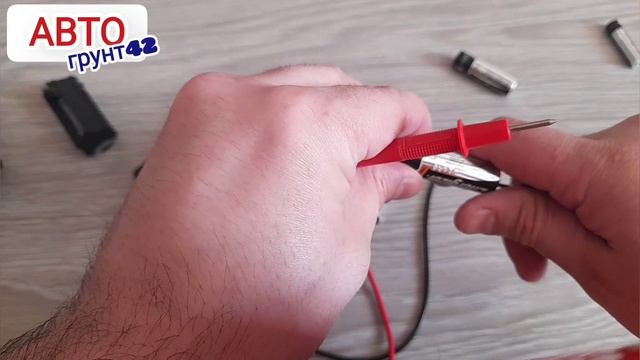
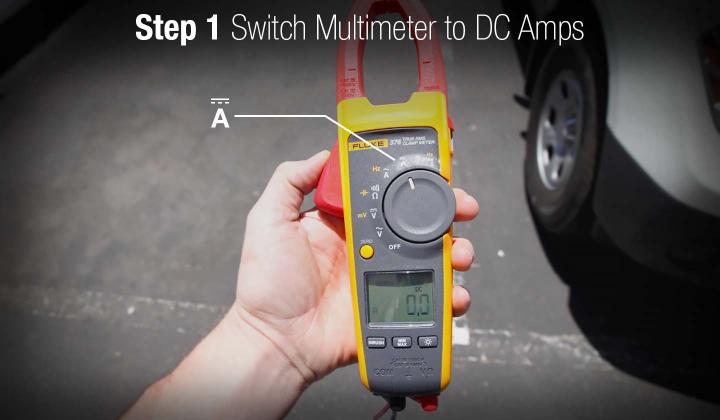 ”
”Having battery troubles? Yeah, we hear you. Almost everyday, we receive calls and comments about batteries that "won't hold a charge" any more. Maybe you've been in that boat before. To clear up a misconception: a battery isn't like a water bottle. You can't use up half now, and then wait and use half later. It's not a tank of electricity. Also, batteries don't "leak" power like water can. What we're dealing with is a lead acid battery in a plastic box that encases a delicate balance of chemicals which are ready to interact with each other to produce electricity when the load is applied.
If your battery is having trouble holding under load, then chances are it's a chemical issue.
Sometimes you can tell if your battery is bad by simply taking a good look. There are a few things to inspect:
Broken or loose terminals are dangerous and can cause a short circuit. If a short did occur, there would be some indication of burning or melting. When a battery short circuits, all the power is unloaded in an instant. That produces a lot of heat, and sometimes even causes the battery to explode.
If the battery is still intact, but there is a bulge in the case, this is usually a result of being overcharged. Other signs such as physical openings in the case are often caused by mishandling. Cracks, splits, and holes will not cause a battery to stop working, but for safety reasons the battery should be labeled unsafe to use.
Cracks, splits, and holes will not cause a battery to stop working, but for safety reasons the battery should be labeled unsafe to use.
With wet-cell (flooded) batteries, water levels must be maintained. If they are low, usually refilling them with distilled water will help. But, if the cells within the battery have been exposed to air for a long time, it can cause a problem. When the plates within each cell are exposed to oxygen it can rapidly dry the paste that surrounds the lead plates. When the paste has dried it creates a barrier that prevents the chemical reaction within the battery. This can also cause the sulfation that has already occurred to harden leading to a sulfated battery which is the number one cause of early battery failure. We strongly recommend checking the water levels prior to charging a wet cell battery since charging a dry battery will burn it up. If your battery has plenty of fluid in the cells, but the color is dark, or brownish, this is also an indication of a bad battery. Even if one cell is brown, it is rendered useless and therefore the entire battery is, too. Time to replace your battery!
Even if one cell is brown, it is rendered useless and therefore the entire battery is, too. Time to replace your battery!
The voltage of a battery is a good way to determine the state of charge. Here's a handy table with the breakdown:
| State of Charge | Voltage |
| 100% | 12.7 - 13.2 |
| 75% | 12.4 |
| 50% | 12.1 |
| 25% | 11.7 |
| Discharged | 0 - 11.6 |
If your battery is:
Sulfation is the natural byproduct when the battery discharges.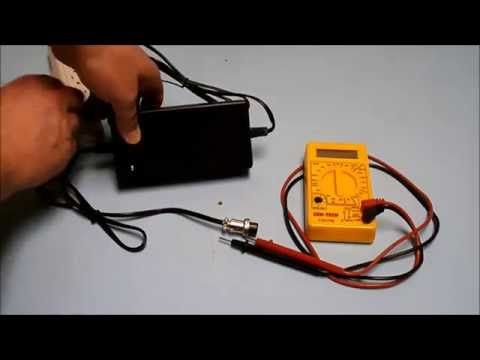 Naturally, re-charging the battery will reverse the sulfation crystals and turn it back into electrolyte, ready to produce power again. But if a battery sat, uncharged, severely discharged, and/or drained for extended periods of time, the sulfation will increase in size and harden onto the plates. This covers the surface area of the plates, removing the chemicals needed to produce power.
Naturally, re-charging the battery will reverse the sulfation crystals and turn it back into electrolyte, ready to produce power again. But if a battery sat, uncharged, severely discharged, and/or drained for extended periods of time, the sulfation will increase in size and harden onto the plates. This covers the surface area of the plates, removing the chemicals needed to produce power.
Sulfation decreases the potential to reach a full charge, and it self-discharges the battery quicker than normal. Charging a sulfated battery is like trying to wash your hands while wearing gloves. At this point, charging alone will not restore the battery to a healthy condition. The majority of replacement battery purchases occur when the original battery has reached this point.
Your local automotive shop is more than able to load test your battery, but it's quite easy to do at home and all you need is a digital voltmeter. For any load test to be accurate, the battery must be fully charged and left to sit 12 hours before load testing the battery.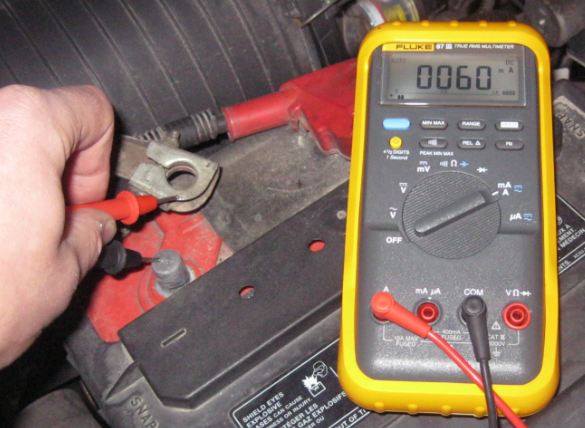 A recently charged battery will hold a residual charge from the charger, so letting the battery sit for 12 hours will release that residual charge and give you a more accurate sense on how the battery will perform under normal circumstances. To the test...
A recently charged battery will hold a residual charge from the charger, so letting the battery sit for 12 hours will release that residual charge and give you a more accurate sense on how the battery will perform under normal circumstances. To the test...
Let's use a motorcycle battery for an example:
A healthy 12 volt battery should maintain a voltage range from 9.6 - 10.5 volts under the load for a good 30 seconds straight.
For starting batteries we don't expect you to run the starter for 30 seconds, so if you see the voltage meter drop within the voltage range and it sounded like a good strong start, then you probably just had a discharged battery.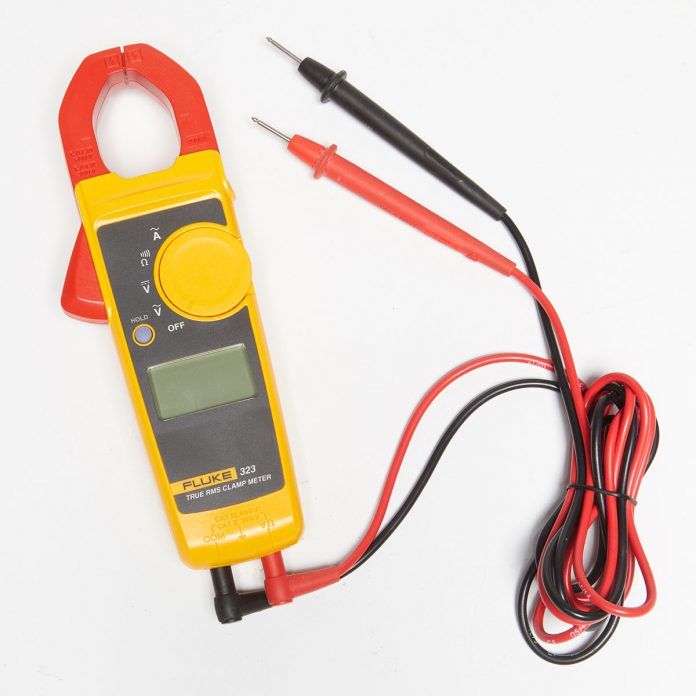 However, if under the starting load the voltage drops below 9.6v, then it is most likely time to replace the battery.
However, if under the starting load the voltage drops below 9.6v, then it is most likely time to replace the battery.
For deep cycle application if the battery holds under load for a few seconds then voltage starts to steadily drop this would indicate a problem with the battery. If the voltage instantly drops to 0 volts, that is also a problem. We call this the open cell. On a new battery, this can be a result of manufacturing flaws, but it also may be caused by sulfate crystal buildup.
A common occurrence with open cell batteries is that under the intense heat of the load, one or more of the weld pieces connecting the cells together is coming loose and separating. This will cut the current, and voltage will drop. When the battery cools off, the pieces will touch, barely giving a complete connection. This gives you a false voltage reading. Batteries with open cells may read fully charged in idle, but they fail under a load test every time. Once a battery reaches this point, there is no going back.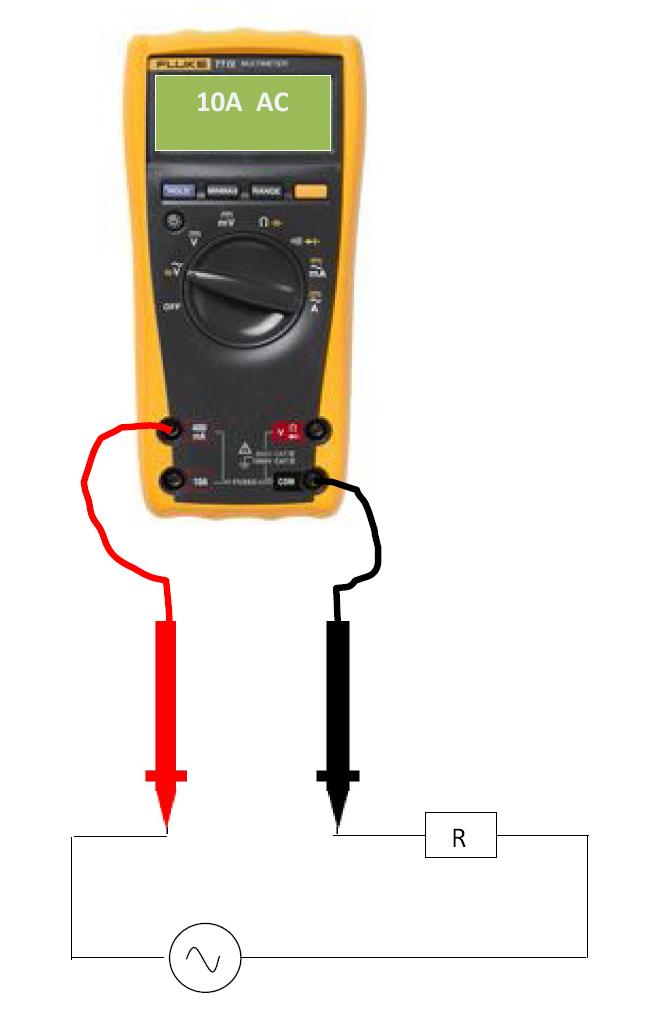 The best thing to do is recycle the thing.
The best thing to do is recycle the thing.
How to tell if a battery is bad or good: These 3 steps will help you test and determine if your battery is truly bad or getting there. Sometimes it's obvious if there is a failure, but other times it's not. Flooded batteries make it possible to simply look inside the cells and determine if the battery has a physical defect. But for sealed AGM and Gel batteries, it requires testing. The only tools you really need are a battery charger and a digital voltmeter. If your battery experiences any of the symptoms described in the steps above, then maybe it's time to replace the battery.
Look no further. We've got a wide selection of powersports batteries for your motorcycle, ATV, scooter, jet ski, or snowmobile. But we also carry batteries for lawn mowers, wheelchairs / mobility scooters, UPS systems, RVs, and marine applications. Whether you need a starting battery or a deep cycle battery, we have the stuff. And all of our replacement batteries come with warranties to ensure that you won't have any of these problems with your new battery.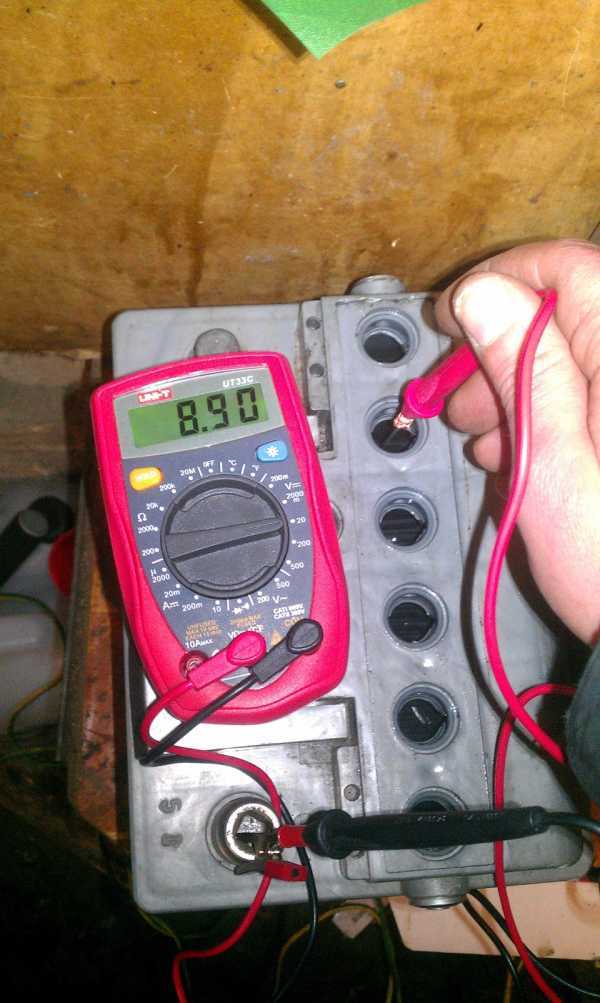
Find Your Battery
Without a working battery, a modern car turns into a pile of iron, even if it is expensive and well packaged. And you can check the performance of such an important part with a multimeter. The main thing is to know the features of its use in different situations. To do this, we will tell you how to check the battery with a multimeter.
From this material you will learn how to measure the battery with a multimeter in different ways: how to measure battery voltage with a multimeter, how to measure amperes, etc.
Contents
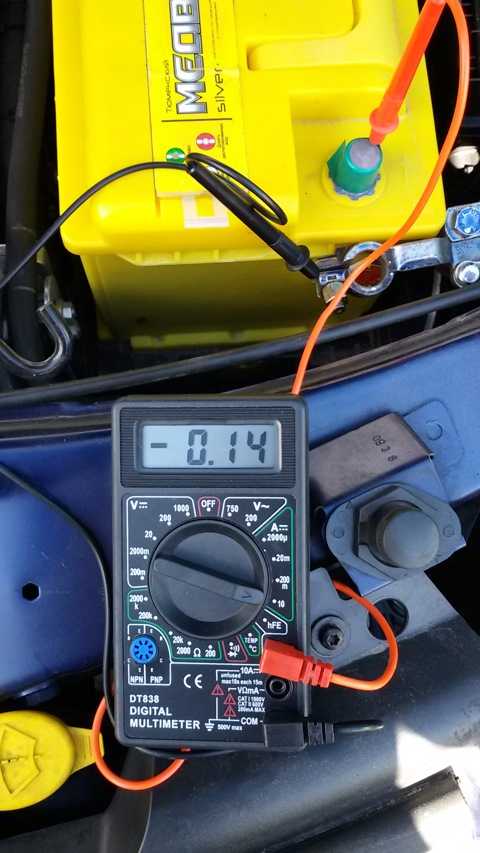 1 How to check the battery charge with a multimeter if the engine is on, and is it possible to do this?
1 How to check the battery charge with a multimeter if the engine is on, and is it possible to do this? The multimeter allows you to find out the actual battery voltage, and the readings will be as accurate as possible. In turn, by voltage you will understand whether the car battery is charged or it needs power.
By the way, you can check the voltage of phone chargers with a multimeter. Video on how to check 12v with a multimeter using such a power supply as an example:
This meter also allows you to detect leakage current. At the same time, it is important to check the leak not only on the body, but also in the on-board car network.
At the same time, it is important to check the leak not only on the body, but also in the on-board car network.
In general, checking the battery with a multimeter is possible for:
With this range of measurements, you can minimize the chance of rapid battery drain and extend battery life. And if, for example, you know how to check the starting current of a battery with a multimeter, then you will understand why the engine does not start.
In this useful article we will tell you about the most important thing. Let's start with how to measure the battery charge with a multimeter.
And immediately a useful video on how to check the battery with a multimeter:
This paragraph also shows how to measure the voltage on the battery with a multimeter in a car. Basically, battery voltage = battery charge.
How to check charging with a multimeter on a car:
 Be sure to read the instructions for use before using the multimeter! But there is a nice point in how to measure the battery charge with a multimeter: if you mix up the colors of the wires, then the number will be correct, but there will be a “-” sign next to it.
Be sure to read the instructions for use before using the multimeter! But there is a nice point in how to measure the battery charge with a multimeter: if you mix up the colors of the wires, then the number will be correct, but there will be a “-” sign next to it. Here is such a simple technology how to check the battery charge with a multimeter in a car.
When the wires touch the battery, numbers appear on the display, by which you can understand the degree of charge:
Here is a useful picture for checking the battery charge with a multimeter:
If you have started the engine, then it is permissible to analyze the functioning of the battery with a multimeter. But its functioning will be shown along with the generator, as well as the performance of the voltage regulator. The process of how to measure the voltage with a multimeter on a car battery with the engine running is normal, but the values are different. The numbers that are within the normal range are slightly larger, somewhere from 13 to 14. If other values \u200b\u200bappear during the measurements:
 Consider the situation. For example, in the cold, the battery has lost its charge, then the generator will work at an increased voltage to fill the battery. You can wait 15 minutes and take the measurement again.
Consider the situation. For example, in the cold, the battery has lost its charge, then the generator will work at an increased voltage to fill the battery. You can wait 15 minutes and take the measurement again. Now you know how to check your car battery with a multimeter.
Video on how to check the battery voltage with a multimeter on a car:
How to check the battery with a multimeter to find out the capacity? Thanks to it, you can understand how much charge the battery gives for a certain time period at a certain voltage. The capacity is indicated in Ah. You can measure it with a multimeter under load.
If you want to learn how to test the battery with a multimeter under load, you can take two headlights. They are connected in parallel. In our example, their total power is 110 watts. We will supply a current of about 9 A through the bulbs. Before starting the process, make sure that the battery is fully charged.
Instructions for checking the battery with a multimeter on a car:
Remember that the battery cannot be completely discharged, so do not allow the voltage to drop below 10.3 V during the measurement. for garbage.
This is how the battery is tested with a multimeter.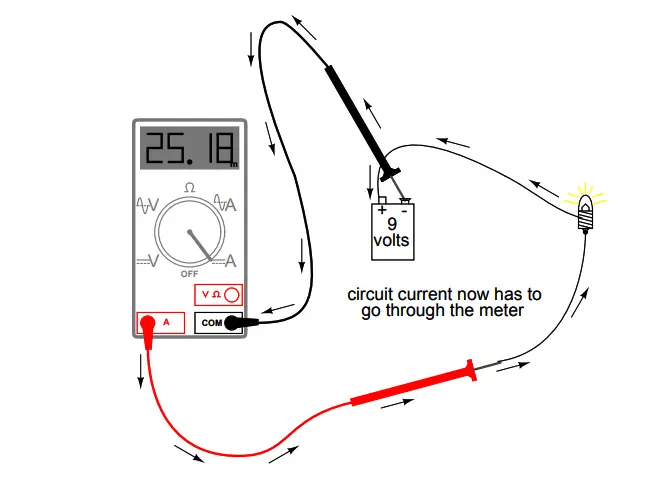
This is a question from the category of how to check the battery amperage with a multimeter. You definitely need a load.
It is pointless and even dangerous to measure the current strength on the battery itself.
A headlamp can act as a load element. Remember that the load cannot be higher than 120W.
How to measure the battery current with a multimeter:
Make sure that the contact of the probe with the battery lasts no longer than two seconds!
We learned how to check the car battery for amps with a multimeter.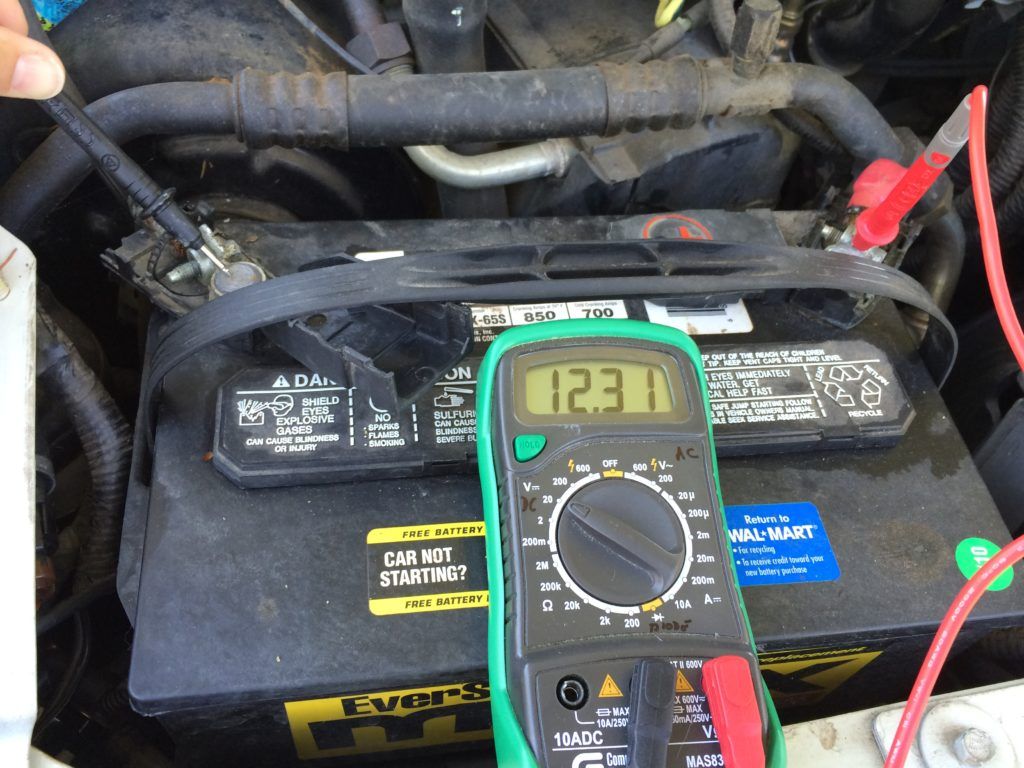 The main thing is to do everything quickly and accurately. And you can do it, because you know how to check the current strength with a multimeter on a battery.
The main thing is to do everything quickly and accurately. And you can do it, because you know how to check the current strength with a multimeter on a battery.
The video explains in detail how to check the battery current with a multimeter:
It is also important to know how to measure a car battery with a multimeter for internal resistance. This also requires a load. Take a 60W halogen bulb. The current consumption will be 5 A. If the amperage is 100 A, then the voltage loss should not exceed 1 V. So, with our value of 5 A, the voltage is about 0.05 V.
How to properly check the battery with a multimeter:

Now we only need to determine the difference between the two values. If it is not more than 0.05 V, everything is in order with the battery, that is, the internal resistance is correct. If the difference is large, then the battery is very worn out, try to replace it as soon as possible.
Now in your piggy bank there is an answer to the question: is it possible to check the battery with a multimeter for internal resistance.
If you don't want to figure out how to measure amps in a battery with a multimeter, how to measure battery charge, how to check a car battery for other parameters with a multimeter, don't worry. There will always be specialists who, for money or for friendship, will carry out all the necessary measurements of the battery with a multimeter.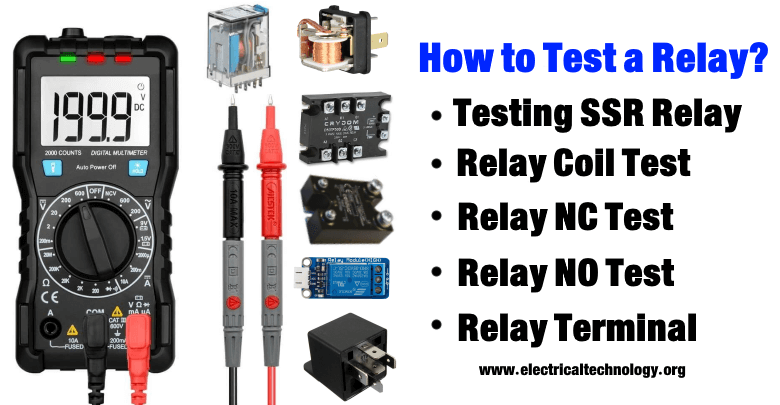
Every battery has a leakage current. It is important to ensure that the value does not exceed approximately 80 mA. The fact is that at least a little energy is consumed even with all the consumer parts of the car turned off. It is also worth considering that due to energy it supports the functioning of the alarm.
If the leak is too large, diagnostics are required.
How to measure the battery with a multimeter for current leakage:
If there is no leak, you will see zeros.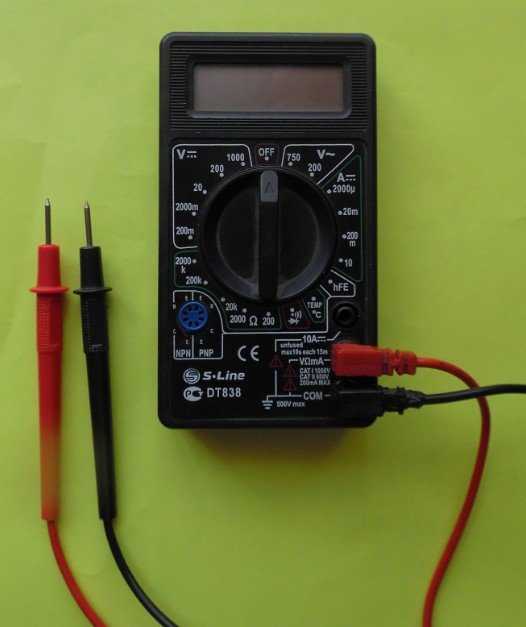 If there is a leak, you will understand by the values how big it is. You can find out where the problem lies: you need to turn off and turn on the fuses in turn.
If there is a leak, you will understand by the values how big it is. You can find out where the problem lies: you need to turn off and turn on the fuses in turn.
It's so easy to figure out how to measure the battery with a multimeter on a car for leakage current.
Now you know how to measure amps on a battery with a multimeter, how to test a battery with a multimeter, how to test a battery with a load with a multimeter, and much more. And for such testing, you will need a regular multimeter, and you do not need a load plug.
We wish you to measure the battery with a multimeter correctly and safely!
Q: How do I test a car battery with a standard multimeter?
Name: Tagir
Answer: It depends on the purpose of the measurement. Using a multimeter, you can check the voltage, capacity and other functions of the battery. In any case, you need to make the correct connection of the probes, and in some cases an additional load is required, for example, when measuring current.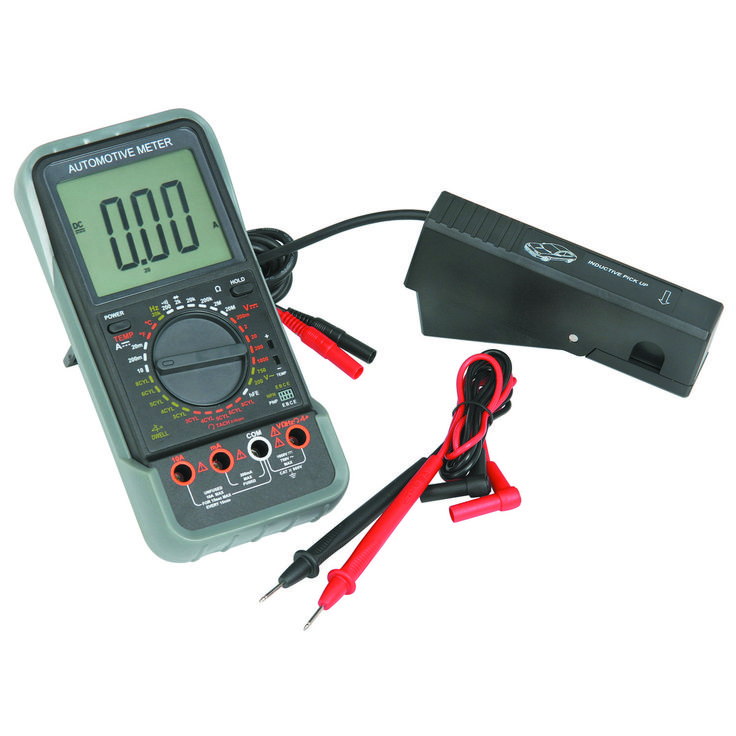
Question: How to correctly measure the current strength with a multimeter on a battery?
Name: Alexey
Answer: This requires a load, which can be taken as a light bulb from the headlight. On the multimeter, the mode for measuring the desired current is selected. Next, the positive cable is connected to the plus of the battery, a lamp is connected to the gap of the minus.
Question: How can I check the battery charge with a simple multimeter?
Name: Azat
Answer: The battery must be disconnected from the car for about five hours. The multimeter is switched to the “voltage” (DC) mode. A value of 20 volts is selected. Now it remains to connect the wires from the multimeter to the battery and observe the numbers on the display.
Question: What is the best way to check battery amperage with a multimeter?
Name: Daniel
Answer: In fact, this is the same as measuring the current. So, you need to use the load. It should not be more than 120 watts. It is important to select the desired current measurement mode on the multimeter, as well as the maximum ampere limit.
So, you need to use the load. It should not be more than 120 watts. It is important to select the desired current measurement mode on the multimeter, as well as the maximum ampere limit.
Q: How can I check the exact battery voltage with a multimeter?
Name: Fedor
Answer: By measuring the voltage, you will know the state of battery charging. The first thing to do is disconnect the battery from the car and wait a few hours.
When the car does not respond to ignition, or, with barely burning bulbs, the starter howls strainedly, it immediately becomes clear to many that not everything is in order with the battery. And is it possible not to bring it to this? It is possible and necessary. Such a useful device in the household as a multimeter makes it possible to measure voltage, resistance, current strength and evaluate the battery capacity. Of practical importance in domestic conditions is checking the voltage (charge).
Of practical importance in domestic conditions is checking the voltage (charge).
The assessment of this parameter tells us about the need to recharge the battery before the appearance of "clinical" symptoms. The algorithm is quite simple.

Current leakage is normal if its value does not exceed 80 mA. This is another indicator that is easy to measure at home, you just need to follow the algorithm.
If the indicator is zero, then there is no problem. Otherwise, we evaluate the value and try to find the source of the problems by turning off and on the fuses in turn.
Using a multimeter, you can try to evaluate other parameters, however, these data will be very indirect, which means that they need to be trusted with a certain degree of skepticism. The correctness of the physical and chemical processes occurring inside the battery case (and hence its condition) can be assessed using more advanced methods.
The correctness of the physical and chemical processes occurring inside the battery case (and hence its condition) can be assessed using more advanced methods.
The load plug creates a short-term short circuit that causes energy to be dissipated from the heated body of the plug, which in turn causes the battery to drain.
The verification technique is similar - red with red, black with black.
The smaller the drop in battery voltage, the better the quality and performance of the battery, and if the voltage is lower than 7V, then the battery is defective. Load forks are manual and automatic, in which the load time is set. It is understood that the latter are more preferable. These devices gave a more accurate picture of the state of the battery before the advent of more advanced equipment.
The previous methods do not give us a clear idea about such a key parameter as starting current, i. e. what is the maximum current that a particular battery can give to start a car engine.
e. what is the maximum current that a particular battery can give to start a car engine.
The testing process is similar to the previous methods - the device is connected to the battery terminals, then the base value of the starting current is selected (written on the battery) - so that the tester can compare the value obtained and then follow the instructions of the tester.
Compared to a multimeter and a load plug, such testing has several advantages:
Such testers are available in professional and household versions.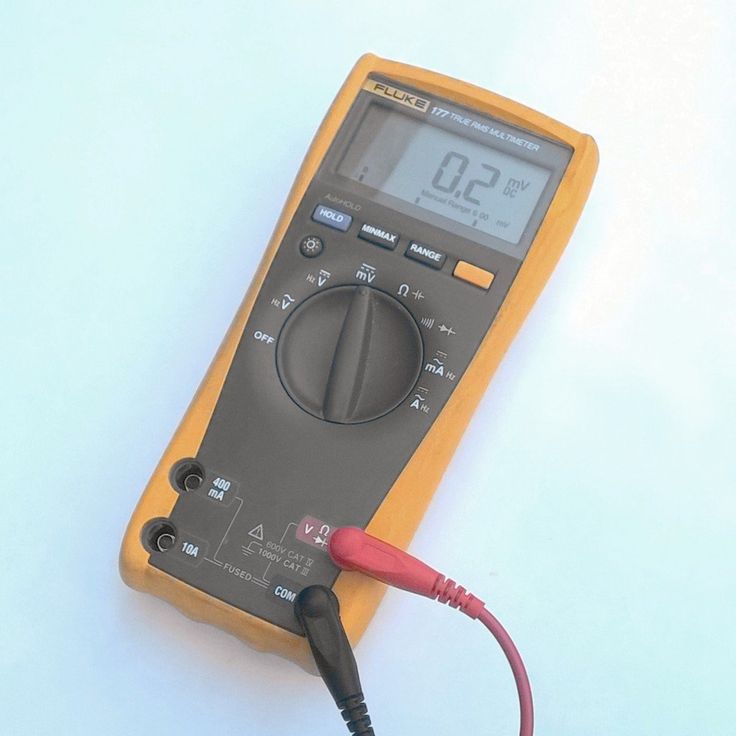 It should be borne in mind that in a particularly budgetary "Chinese" version, one should not count on the correctness of measurements.
It should be borne in mind that in a particularly budgetary "Chinese" version, one should not count on the correctness of measurements.
Actually, this is part of a long and multi-stage process that is best left to professionals. All these artisanal methods, for example, discharging with a light bulb, while simultaneously controlling the time and readings of a multimeter, are archaic and unsafe. An accurate assessment of the residual capacity, in a service laboratory, removes all questions about the condition of the battery and the need to replace it.
We deliberately did not mention the "garage" diagnostic methods (checking with a multimeter on a running engine, creating loads, etc.) - they are archaic, inaccurate and unsafe for the car and the tester.
In practice, for 90% of motorists, it is enough to check the battery charge using a multimeter.
If there are no other electrical issues, in-depth testing may be necessary before winter operation to ensure that the battery will provide a reliable cold start.